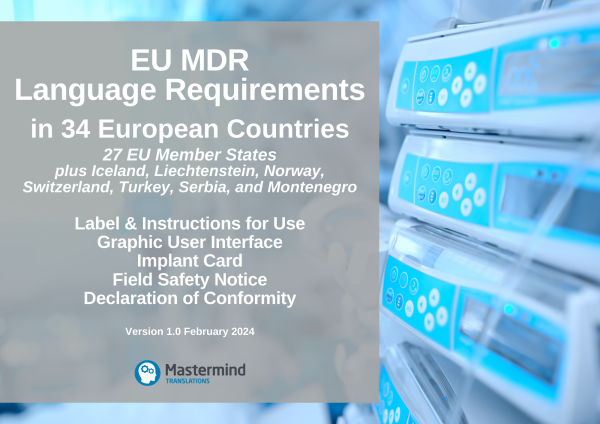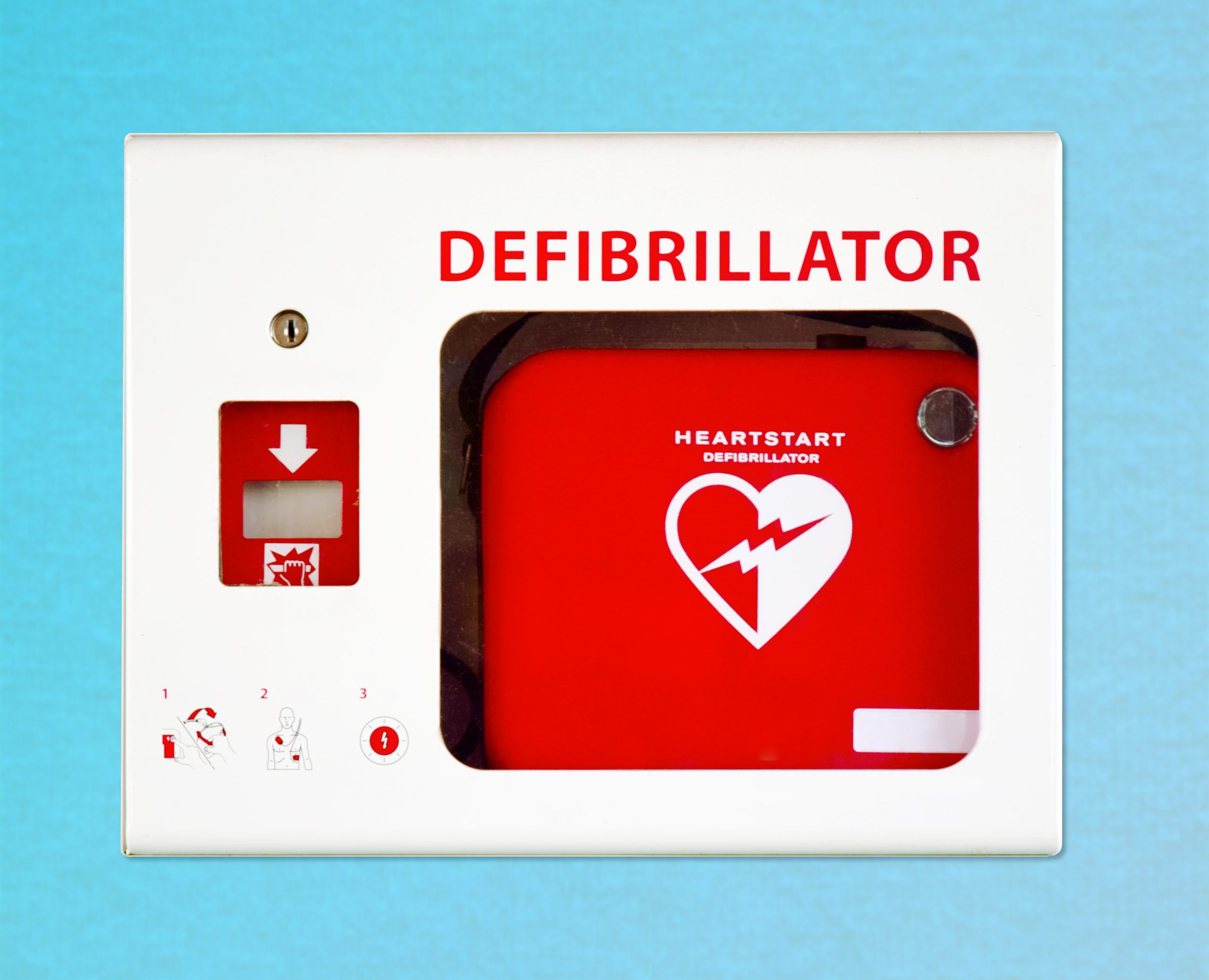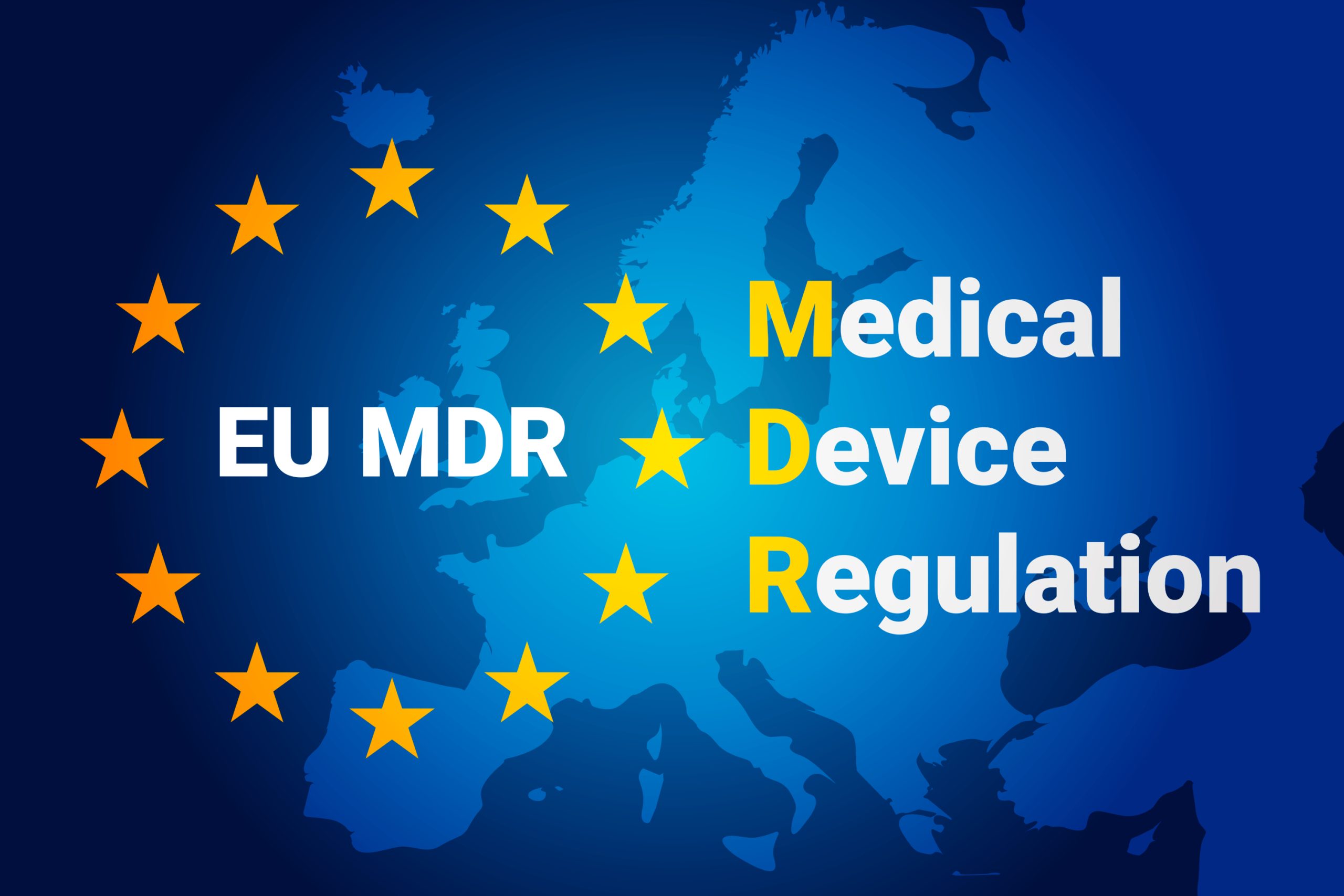The EU MDR/IVDR IFU translation requirements are among the many measures aimed at ensuring patient safety and protecting public health within the new EU regulatory framework for medical devices. The linguistic diversity of the EU Member States, however, poses a challenge for manufacturers of medical devices planning to place their product on the EU market. In this article, we focus specifically on instructions for use, commonly referred to as the IFU. Read on to find practical information on how the language aspects of your IFU are regulated by the EU MDR and the EU IVDR, including the language version(s) you should make available for each national market within the EU.
The fundamental purpose of the new Medical Device Regulation (MDR) 2017/745/EU and the In Vitro Diagnostic Medical Device Regulation (IVDR) (EU) 2017/746 is to protect public health and patient safety across the 27 EU Member States. An essential part of achieving this objective is ensuring that all medical devices placed on the EU market, including in vitro diagnostic medical devices, are used safely and correctly. A medical device can be used safety and correctly only if its user fully understands the information that accompanies it, such as the instructions for use (IFU). For this reason, manufacturers of medical devices need to comply with a number of EU MDR/IVDR IFU translation requirements.
Before we discuss the EU MDR/IVDR IFU translation requirements in more detail, it is important to understand the wider context.
What provisions do the MDR and the IVDR make for the information supplied with the device?
Article 10(11) of the MDR and Article 10(10) of the IVDR state that the manufacturer must make the information which accompanies the device available to the user in an official EU language(s). Each EU Member State is expected to determine individually which language version(s) of this information it will accept for its national market.
Which information supplied with the device is affected by the MDR/IVDR language requirements?
The MDR/IVDR language requirements apply to a range of information supplied with the device, such as:
- • Label, packaging, and instructions for use
The MDR and the IVDR define the label and instructions for use as follows:
MDR, Article 2(13)
IVDR, Article 2(13)
‘label’ means the written, printed or graphic information appearing either on the device itself, or on the packaging of each unit or on the packaging of multiple devices;
MDR, Article 2(14)
IVDR, Article 2(14)
‘instructions for use’ means the information provided by the manufacturer to inform the user of a device’s intended purpose and proper use and of any precautions to be taken;
Specific requirements regarding the information supplied with the device, referred to in Article 10(11) of the MDR and Article 10(10) of the IVDR, are set out in Annex I, Chapter III, Section 23 of the MDR and Annex I, Chapter III, Section 20 of the IVDR. In particular, Section 23.1 of the MDR and Section 20.1 of the IVDR stipulate that:
MDR, Annex I, Chapter III, Section 23.1
IVDR, Annex I, Chapter III, Section 20.1
Each device shall be accompanied by the information needed to identify the device and its manufacturer, and by any safety and performance information relevant to the user, or any other person, as appropriate. Such information may appear on the device itself, on the packaging or in the instructions for use, and shall, if the manufacturer has a website, be made available and kept up to date on the website.
Items in Section 23.1 of the MDR and Section 20.1 of the IVDR lay out general rules of what should be taken into account with regard to the information supplied with the device. The subsequent sections provide more detailed conditions for the particulars that must be included on the label (‘Information on the label’), on the sterile packaging (‘Information on the packaging which maintains the sterile condition of a device (‘sterile packaging’)’), and in the IFU (‘Information in the instructions for use’). In addition, in Section 20.4.2, the IVDR also sets out rules for the IFU supplied with in vitro diagnostic devices intended for self-testing.
Although the information supplied with the device is by its very nature considered primarily user-facing, i.e. intended for the user, it must also be included in the manufacturer’s technical documentation. The label, packaging, and IFU are explicitly mentioned in Annex II Section 2 of the MDR and the IVDR, which lists technical documentation to be supplied by the manufacturer.
MDR, Annex II Section 2
IVDR, Annex II Section 2
INFORMATION TO BE SUPPLIED BY THE MANUFACTURER
A complete set of
(a) the label or labels on the device and on its packaging, such as single unit packaging, sales packaging, transport packaging in the case of specific management conditions, in the languages accepted in the Member States where the device is envisaged to be sold;
(b) the instructions for use in the languages accepted in the Member States where the device is envisaged to be sold.
- • Graphical user interface
Whether the graphical user interface (GUI) requires translation is one of the most common questions asked by medical device manufacturers.
In the case of software that is a device in itself in the meaning of the MDR or the IVDR, the GUI is considered IFU if no instructions for use are otherwise provided. This means that the GUI falls within the scope of the MDR Article 10(11) and the IVDR Article 10(10), and as such, is also subject to the MDR/IVDR language requirements.
Any text displayed on the screen of an IVD or in software that has been established to contain any safety and performance information relevant to the user is also considered IFU, and therefore, the IVDR language requirements apply to it.
Do the EU MDR/IVDR IFU translation requirements apply to electronic instructions for use?
Regardless of whether the IFU is provided in the traditional paper form or in electronic form as the eIFU, it still needs to be available in the language(s) accepted in the respective national markets within the EU where the device is being sold.
The Implementing Regulation 2021/2226 of 14th December 2021, which became applicable on 4th January 2022, lays down rules for manufacturers of medical devices, including software covered by the MDR, on going paperless.
The language requirement is set out in Article 5(11).
Implementing Regulation 2021/2226, Article 5(11)
Manufacturers of devices referred to in Article 3, paragraphs 1 and 3, may provide instructions for use to users in electronic form instead of in paper form under the following conditions:
the instructions for use shall be available on their website in an official language of the Union determined by the Member State in which the device is made available to the user or patient;
It is worth noting that Article 3(2)(a) allows the electronic form only for devices and accessories which are intended exclusively for professional users. However, for software as defined by the MDR, the electronic form is also permitted even if the device is not used solely by professionals. In such cases, the IFU must be provided in electronic form through the software itself and not in paper form (Article 3(3)).
The Implementing Regulation does not apply to in vitro diagnostic medical devices. This aspect is regulated by the IVDR itself in Annex I, Chapter III, 20.1(f) as follows:
IVDR, Annex I, Chapter III, Section 20.1(f)
When the device is intended for professional use only, instructions for use may be provided to the user in non-paper format (e.g. electronic), except when the device is intended for near-patient testing.
What are the EU MDR/IVDR IFU translation requirements?
The EU MDR/IVDR IFU translation requirements cover:
- • Readability
Readability is defined as the ease of understanding or comprehension achieved by the style of writing.
The MDR and the IVDR explicitly address the issue of readability in Annex I.
MDR, Annex I, Chapter III, Section 23.1(a)
IVDR, Annex I, Chapter III, Section 20.1(a)
The medium, format, content, legibility, and location of the label and instructions for use shall be appropriate to the particular device, its intended purpose and the technical knowledge, experience, education or training of the intended user(s). In particular, instructions for use shall be written in terms readily understood by the intended user and, where appropriate, supplemented with drawings and diagrams.
This means that the level of the language needs to be adjusted to match the understanding reasonably expected from the user. The MDR and the IVDR define ‘user’ as follows:
MDR, Article 2(37)
IVDR, Article 2(30)
‘user’ means any healthcare professional or lay person who uses a device;
Whereas ‘lay person’ in the meaning of the MDR and the IVDR is as follows:
MDR, Article 2(38)
IVDR, Article 2(31)
‘lay person’ means an individual who does not have formal education in a relevant field of healthcare or medical discipline;
The user’s comprehension may be affected not only by terminology and jargon (semantics), but also by sentence structures (syntax) and layout. For example, ‘saline solution’ would be considered a lay term for ‘sodium chloride solution’ or ‘NaCl solution’, whereas the use of the passive voice should be reserved for more technical writing.
It is important to remember that these general rules of writing apply to the original version of the IFU as well as its translated versions.
- • Translation into official EU languages
As explained in this and our previous articles on the MDR/IVDR language requirements, the MDR and the IVDR explicitly require that manufacturers make the IFU available in an official EU language(s) determined by the EU Member State where the device is being placed. This is to say that each EU Member State is responsible for specifying, at the national level, the official EU language(s) for the IFU supplied with a device placed on its national market.
Some countries, such as Belgium and Finland, expect the IFU to be available in all their official languages for devices intended for lay persons, but allow a level of flexibility for devices intended for the professional user. Other countries, such as the Netherlands and Romania, accept English for the IFU supplied with devices for the professional user when certain conditions are met.
The EU MDR/IVDR translation requirements of course do not apply to those devices which, under the MDR and the IVDR, are not required to be supplied with the IFU, such as class I and class IIa devices.
For the list of official EU languages accepted in each EU Member State for the IFU supplied with devices intended for the lay person and the professional user, respectively, please see our previous articles:
- • Which Languages Are Accepted under the MDR Language Requirements in Each EU Member State? (medical devices)
- • What Are the EU IVDR Language Requirements and Which Languages Does Each EU Member State Accept? (in vitro diagnostic medical devices)
Where can we find more detailed information?
For more detailed information on the languages accepted for the label/IFU in individual EU Member States, the three non-EU EEA Member States (Iceland, Liechtenstein, and Norway), Switzerland, Turkey, and the EU candidate countries of Serbia and Montenegro in accordance with the MDR language requirements, please consider purchasing the EU MDR Language Requirements Table 2024 from our online store. It includes English summaries of national legislation and official guidelines from competent authorities, accompanied by clickable links to the official sources. In addition to the sections dedicated to the IFU, it also covers other types of documentation, such as the GUI (professional vs lay use), field safety notice (FSN), and declaration of conformity (DoC).
For similar information for IVDs, please contact us directly.
Please note that the information provided in this article is for guidance only and does not constitute professional regulatory advice. In the case of specific questions related to regulatory compliance, we recommend seeking assistance from a QA/RA specialist or a relevant competent authority.







